Saturn And Its Moons
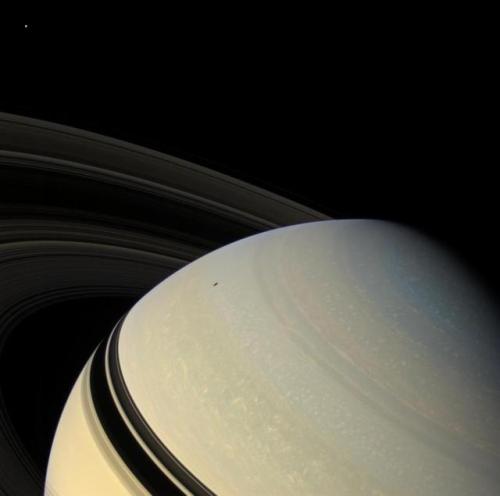
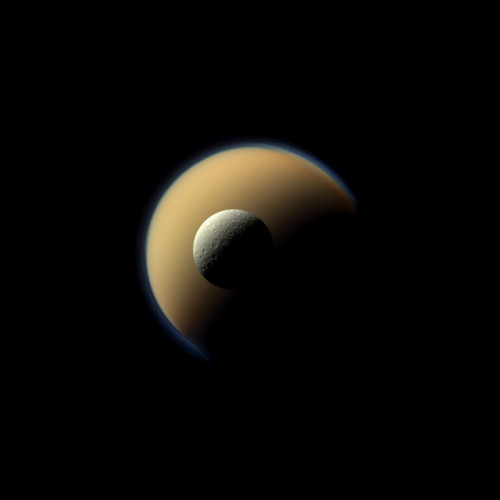
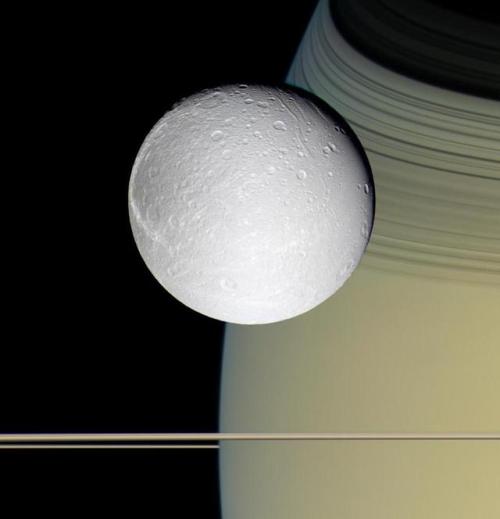
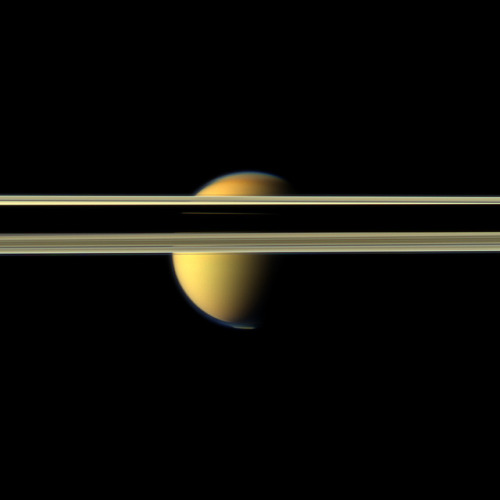
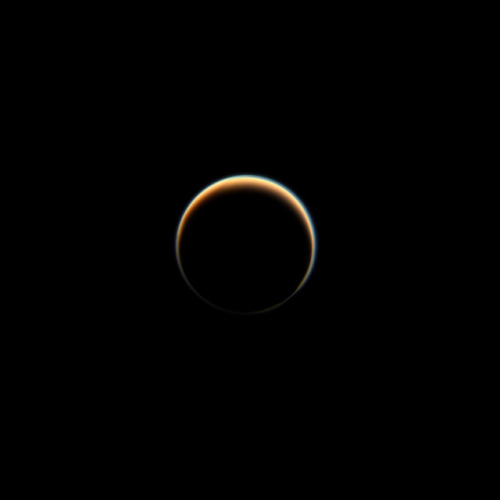
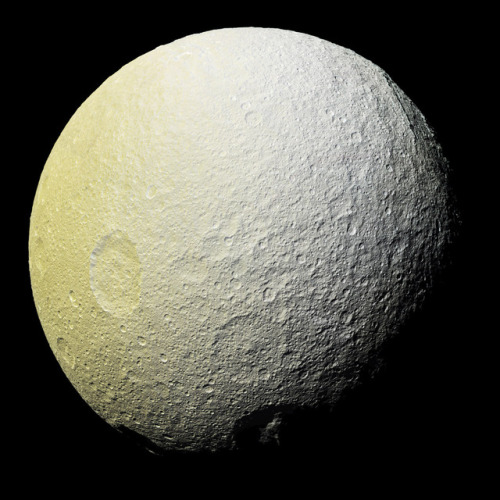
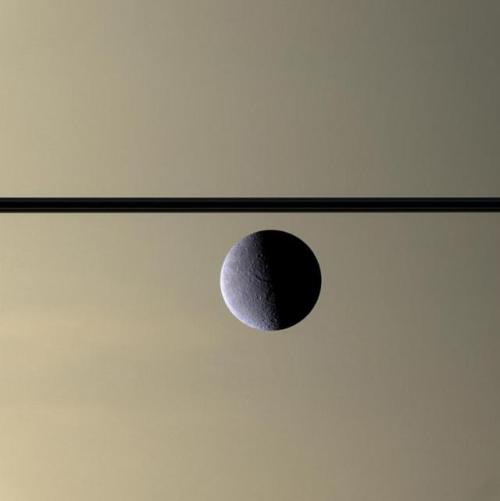

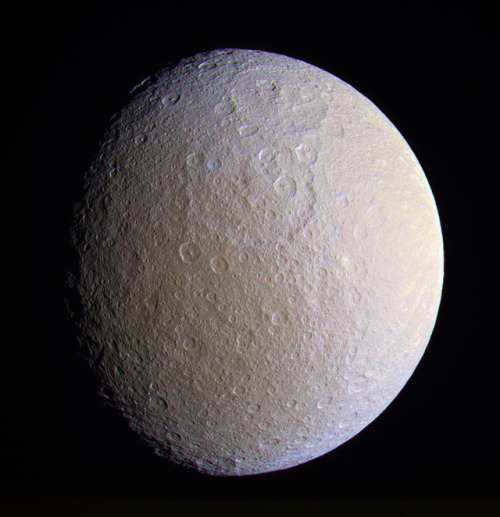
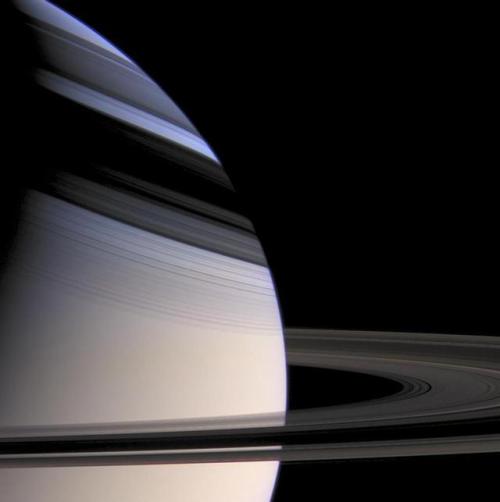
Saturn and its moons
Image credit: NASA/JPL-Caltech
More Posts from Monstrous-mind and Others


By jayeffex
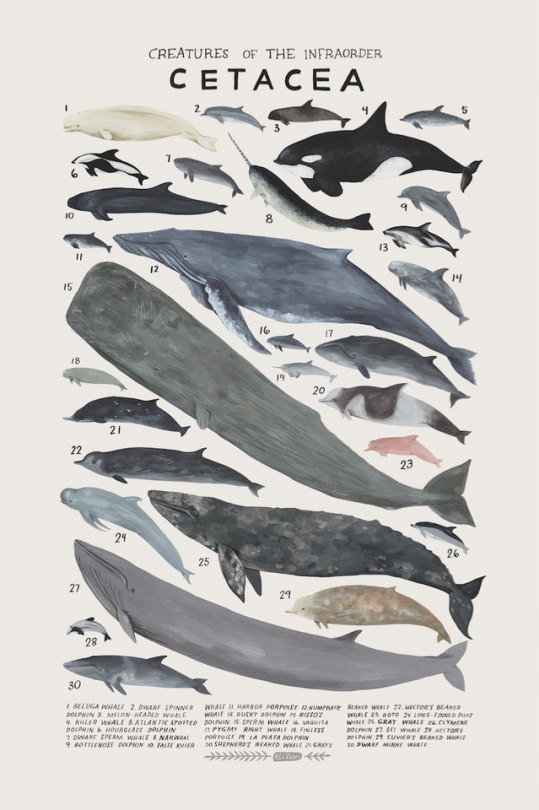

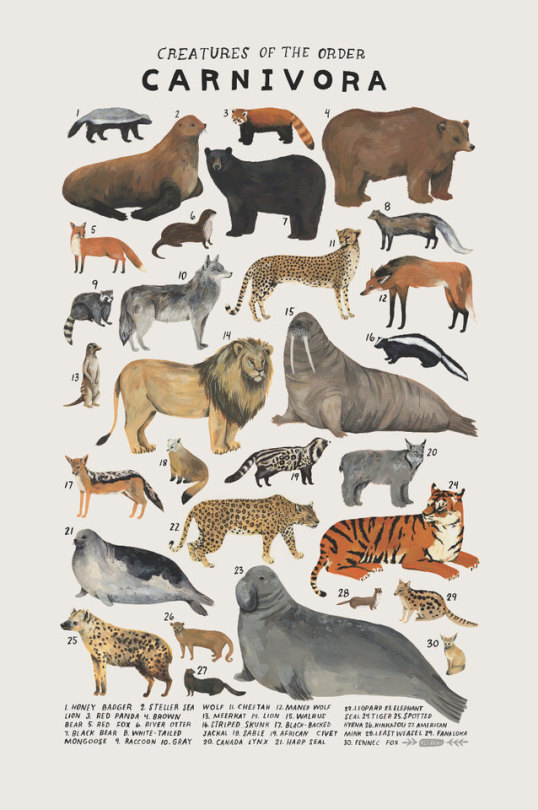

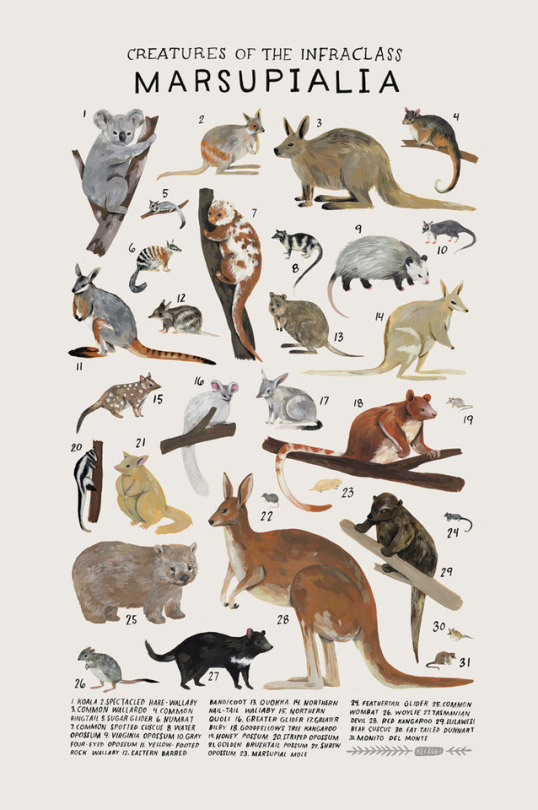





Science Posters by Kelsey Oseid on Etsy
String Theory
String theory is a fascinating physical model in which all particles are replaced by one-dimensional objects known as strings. This theory says that we live in more than four dimensions, but we can not perceive them.
String theory, is a complete theory and unites quantum physics with Einstein’s general relativity.

On distance scales larger than the string scale, a string looks just like an ordinary particle, with its mass, charge, and other properties determined by the vibrational state of the string. In string theory, one of the many vibrational states of the string corresponds to the graviton, a quantum mechanical particle that carries gravitational force. Thus string theory is a theory of quantum gravity.

According to string theory, the reason we can not observe these dimensions is because they are very small and compact (smaller than the plank length 10 −35)


Compactification is one way of modifying the number of dimensions in a physical theory. In compactification, some of the extra dimensions are assumed to “close up” on themselves to form circles. In the limit where these curled up dimensions become very small, one obtains a theory in which spacetime has effectively a lower number of dimensions. A standard analogy for this is to consider a multidimensional object such as a garden hose. If the hose is viewed from a sufficient distance, it appears to have only one dimension, its length. However, as one approaches the hose, one discovers that it contains a second dimension, its circumference. Thus, an ant crawling on the surface of the hose would move in two dimensions.

Compactification can be used to construct models in which spacetime is effectively four-dimensional. However, not every way of compactifying the extra dimensions produces a model with the right properties to describe nature. In a viable model of particle physics, the compact extra dimensions must be shaped like a Calabi–Yau manifold

Another approach to reducing the number of dimensions is the so-called brane-world scenario. In this approach, physicists assume that the observable universe is a four-dimensional subspace of a higher dimensional space. In such models, the force-carrying bosons of particle physics arise from open strings with endpoints attached to the four-dimensional subspace, while gravity arises from closed strings propagating through the larger ambient space. This idea plays an important role in attempts to develop models of real world physics based on string theory, and it provides a natural explanation for the weakness of gravity compared to the other fundamental forces

One notable feature of string theories is that these theories require extra dimensions of spacetime for their mathematical consistency. In bosonic string theory, spacetime is 26-dimensional, while in superstring theory it is 10-dimensional, and in M-theory it is 11-dimensional. In order to describe real physical phenomena using string theory, one must therefore imagine scenarios in which these extra dimensions would not be observed in experiments.

The original version of string theory was bosonic string theory, but this version described only bosons, a class of particles which transmit forces between the matter particles, or fermions. Bosonic string theory was eventually superseded by theories called superstring theories. These theories describe both bosons and fermions, and they incorporate a theoretical idea called supersymmetry.

This is a mathematical relation that exists in certain physical theories between the bosons and fermions. In theories with supersymmetry, each boson has a counterpart which is a fermion, and vice versa.

There are several versions of superstring theory: type I, type IIA, type IIB, and two flavors of heterotic string theory (SO(32) and E8×E8). The different theories allow different types of strings, and the particles that arise at low energies exhibit different symmetries. For example, the type I theory includes both open strings (which are segments with endpoints) and closed strings (which form closed loops), while types IIA, IIB and heterotic include only closed strings.

Branes
In string theory and other related theories, a brane is a physical object that generalizes the notion of a point particle to higher dimensions. For instance, a point particle can be viewed as a brane of dimension zero, while a string can be viewed as a brane of dimension one. It is also possible to consider higher-dimensional branes. In dimension p, these are called p-branes. The word brane comes from the word “membrane” which refers to a two-dimensional brane
In string theory, D-branes are an important class of branes that arise when one considers open strings

D-branes are typically classified by their spatial dimension, which is indicated by a number written after the D. A D0-brane is a single point, a D1-brane is a line (sometimes called a “D-string”), a D2-brane is a plane, and a D25-brane fills the highest-dimensional space considered in bosonic string theory. There are also instantonic D(–1)-branes, which are localized in both space and time.
Duality
A striking fact about string theory is that the different versions of the theory prove to be highly non-trivial in relation. One of the relationships that exist between different theories is called S-duality. This is a relationship that says that a collection of interacting particles in a theory may in some cases be viewed as a collection of weak interacting particles in a completely different theory. Approximately, a collection of particles is said to interact strongly if they combine and deteriorate frequently and interact poorly if they do so infrequently. The type I string theory turns out to be equivalent by S-duality to the heterotic string theory SO (32). Likewise, type IIB string theory is related to itself in a non-trivial way by S-duality

Another relationship between different string theories is T-duality. Here one considers strings propagating around a circular extra dimension. T-duality states that a string propagating around a circle of radius R is equivalent to a string propagating around a circle of radius 1/R in the sense that all observable quantities in one description are identified with quantities in the dual description. For example, a string has momentum as it propagates around a circle, and it can also wind around the circle one or more times. The number of times the string winds around a circle is called the winding number. If a string has momentum p and winding number n in one description, it will have momentum n and winding number p in the dual description. For example, type IIA string theory is equivalent to type IIB string theory via T-duality, and the two versions of heterotic string theory are also related by T-duality.

Black holes
In general relativity, a black hole is defined as a region of spacetime in which the gravitational field is so strong that no particle or radiation can escape. In the currently accepted models of stellar evolution, black holes are thought to arise when massive stars undergo gravitational collapse, and many galaxies are thought to contain supermassive black holes at their centers.

Black holes are also important for theoretical reasons, as they present profound challenges for theorists attempting to understand the quantum aspects of gravity. String theory has proved to be an important tool for investigating the theoretical properties of black holes because it provides a framework in which theorists can study their thermodynamics.

The big bang theory doesn’t offer any explanation for what started the original expansion of the universe. This is a major theoretical question for cosmologists, and many are applying the concepts of string theory in attempts to answer it. One controversial conjecture is a cyclic universe model called the ekpyrotic universe theory, which suggests that our own universe is the result of branes colliding with each other.
Some things that string theory could explain: Neutrinos would have to have mass (minimum), Decay of Proton, New fields of force (short and long range) defined by some forms of calabi-yau, Explanations for Dark Matter.
sources: x, x, x, x, x, x

String theory is a very complex and broad area, so this post is only a summary. To better understand, I suggest you read Brian Greene’s books: The Elegant Universe and The Fabric of the Cosmo.
🍂🍁

🔭🌃🌌🍂🍁

Saturn & Tethys - June 2 2007
Credit: NASA/JPL-Caltech/SSI/CICLOPS/Kevin M. Gill
🔭🌃🌌
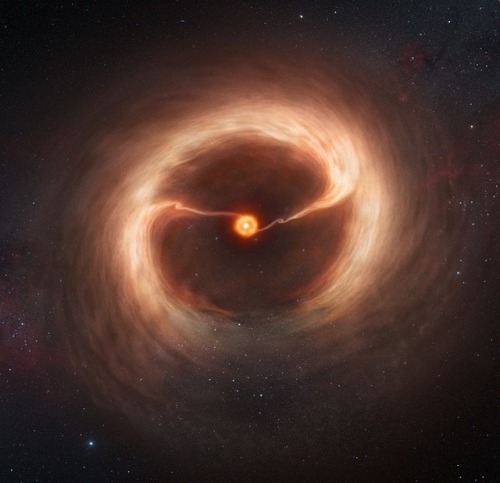
This artist’s impression shows the disc of gas and cosmic dust around the young star HD 142527. Astronomers using the Atacama Large Millimeter/submillimeter Array (ALMA) telescope have seen vast streams of gas flowing across the gap in the disc. These are the first direct observations of these streams, which are expected to be created by giant planets guzzling gas as they grow, and which are a key stage in the birth of giant planets.
Credit: ESO / Atacama Large Millimeter/submillimeter Array
What’s Up For September 2018?
Outstanding views Venus, Jupiter, Saturn and Mars with the naked eye!

You’ll have to look quickly after sunset to catch Venus. And through binoculars or a telescope, you’ll see Venus’s phase change dramatically during September - from nearly half phase to a larger thinner crescent!

Jupiter, Saturn and Mars continue their brilliant appearances this month. Look southwest after sunset.

Use the summer constellations help you trace the Milky Way.

Sagittarius: where stars and some brighter clumps appear as steam from the teapot.

Aquila: where the Eagle’s bright Star Altair, combined with Cygnus’s Deneb, and Lyra’s Vega mark the Summer Triangle.

Cassiopeia, the familiar “w”- shaped constellation completes the constellation trail through the Summer Milky Way. Binoculars will reveal double stars, clusters and nebulae.

Between September 12th and the 20th, watch the Moon pass from near Venus, above Jupiter, to the left of Saturn and finally above Mars!

Both Neptune and brighter Uranus can be spotted with some help from a telescope this month.

Look at about 1:00 a.m. local time or later in the southeastern sky. You can find Mercury just above Earth’s eastern horizon shortly before sunrise. Use the Moon as your guide on September 7 and 8th.

And although there are no major meteor showers in September, cometary dust appears in another late summer sight, the morning Zodiacal light. Try looking for it in the east on moonless mornings very close to sunrise. To learn more about the Zodiacal light, watch “What’s Up” from March 2018.

Watch the full What’s Up for September Video:
There are so many sights to see in the sky. To stay informed, subscribe to our What’s Up video series on Facebook.
Make sure to follow us on Tumblr for your regular dose of space: http://nasa.tumblr.com
🍁🍂🎃🍂🍁🍃🌬🌄🐈


-
 londongrl liked this · 3 months ago
londongrl liked this · 3 months ago -
 anna2zkb7 liked this · 6 months ago
anna2zkb7 liked this · 6 months ago -
 phatalredarsinnal reblogged this · 7 months ago
phatalredarsinnal reblogged this · 7 months ago -
 dreamsfr0myesterday reblogged this · 1 year ago
dreamsfr0myesterday reblogged this · 1 year ago -
 henryasilva liked this · 1 year ago
henryasilva liked this · 1 year ago -
 alover1961 liked this · 1 year ago
alover1961 liked this · 1 year ago -
 grellgirl liked this · 1 year ago
grellgirl liked this · 1 year ago -
 theessenceofjaida liked this · 1 year ago
theessenceofjaida liked this · 1 year ago -
 leoversoti liked this · 1 year ago
leoversoti liked this · 1 year ago -
 phetamineme liked this · 1 year ago
phetamineme liked this · 1 year ago -
 jack-sparrow-06 liked this · 2 years ago
jack-sparrow-06 liked this · 2 years ago -
 itsmistake reblogged this · 2 years ago
itsmistake reblogged this · 2 years ago -
 thecryptoanthropologist1 liked this · 2 years ago
thecryptoanthropologist1 liked this · 2 years ago -
 stay-young-look-young-blog liked this · 2 years ago
stay-young-look-young-blog liked this · 2 years ago -
 youngmaninamerica reblogged this · 2 years ago
youngmaninamerica reblogged this · 2 years ago -
 youngmaninamerica liked this · 2 years ago
youngmaninamerica liked this · 2 years ago -
 ridazzle liked this · 2 years ago
ridazzle liked this · 2 years ago -
 jameskaneart reblogged this · 2 years ago
jameskaneart reblogged this · 2 years ago -
 jameskaneart liked this · 2 years ago
jameskaneart liked this · 2 years ago -
 herecomesthehuman reblogged this · 2 years ago
herecomesthehuman reblogged this · 2 years ago -
 fdofox reblogged this · 2 years ago
fdofox reblogged this · 2 years ago -
 fdofox liked this · 2 years ago
fdofox liked this · 2 years ago -
 daretoshowit liked this · 2 years ago
daretoshowit liked this · 2 years ago -
 masciamanga liked this · 2 years ago
masciamanga liked this · 2 years ago -
 bornruffianss reblogged this · 2 years ago
bornruffianss reblogged this · 2 years ago -
 diveintomyson reblogged this · 2 years ago
diveintomyson reblogged this · 2 years ago -
 nomorebugs reblogged this · 2 years ago
nomorebugs reblogged this · 2 years ago -
 nomorebugs liked this · 2 years ago
nomorebugs liked this · 2 years ago -
 yidpunk reblogged this · 2 years ago
yidpunk reblogged this · 2 years ago -
 kitnjon liked this · 2 years ago
kitnjon liked this · 2 years ago -
 palominojacoby reblogged this · 2 years ago
palominojacoby reblogged this · 2 years ago -
 angelicsoul99 reblogged this · 2 years ago
angelicsoul99 reblogged this · 2 years ago -
 ilovestudying555 reblogged this · 3 years ago
ilovestudying555 reblogged this · 3 years ago -
 ilovestudying555 liked this · 3 years ago
ilovestudying555 liked this · 3 years ago -
 akis-b liked this · 3 years ago
akis-b liked this · 3 years ago -
 locaageha liked this · 3 years ago
locaageha liked this · 3 years ago
My ambition is handicapped by laziness. -C. Bukowski Me gustan las personas desesperadas con mentes rotas y destinos rotos. Están llenos de sorpresas y explosiones. -C. Bukowski. I love cats. Born in the early 80's, raised in the 90's. I like Nature, Autumn, books, landscapes, cold days, cloudy Windy days, space, Science, Paleontology, Biology, Astronomy, History, Social Sciences, Drawing, spending the night watching at the stars, Rick & Morty. I'm a lazy ass.
222 posts